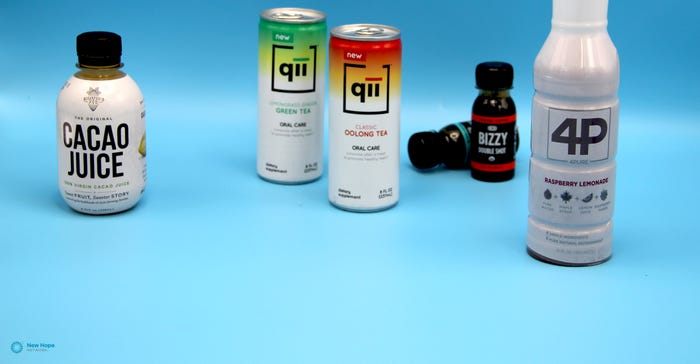Unique drinks can boost basket size with novelty, efficacy and unexpected ingredients.

Beverages seem ready-made to inspire impulse purchases. Often bought with a grab-and-go meal, ready-to-drink beverages (both refrigerated and shelf-stable) offer just enough innovation and portability, and a relatively low price point, to urge consumers to buy with little thought.
There is impressive creativity brewing within the beverage category. From new ingredients that incorporate normally landfill-bound food waste into tasty juices, to products that help consumers maintain oral health throughout the day, aisles are awash in exciting new SKUs.
Why the surge? Market fragmentation is certainly a chief reason. Whereas old-school soda corporations (cough, Pepsi and Coca-Cola) used to dominate shelf space, smaller brands that prioritize health and natural ingredients have gained important ground in grocery stores—particularly functional beverages that promise improved energy, well-being, nutrition, sleep and more. According to data collected by Nutrition Business Journal, in 2016 beverages made up 65.9 percent of the functional food and beverage market, and in 2017, sales of functional canned and bottled drinks grew 8.8 percent to $6.43 billion. Evidence suggests that the category won’t slow down any time soon. By 2021, NBJ estimates, functional canned and bottled drinks will grow to $8.5 billion. Bottom's up!
Read more about:
UnboxedAbout the Author(s)
You May Also Like




